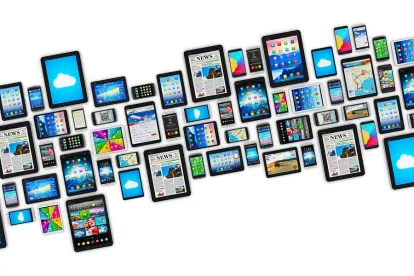In the recent FairWarning and Synopsys cases, the US Court of Appeals for the Federal Circuit found the challenged claims of a patent ineligible under 35 USC § 101 for not claiming a technical improvement. Following this trend, the Federal Circuit reversed in part a Patent Trial and Appeal Board (PTAB or Board) finding of patent-eligible subject matter. Apple, Inc. v. Ameranth, Inc., Case No. 15-1704 (Fed. Cir., Nov. 29, 2016) (Reyna, J).
The challenged patents are directed to menus—for example, restaurant menus. The patent specifications disclose a first menu that has categories and items, and software that can generate a second menu from the first menu by allowing categories and items to be selected. In three covered business method reviews, the PTAB determined that the challenged patents were not directed to technological inventions. In connection with the “step one” (abstract idea issue) analysis under Mayo, the PTAB determined that the challenged claims were directed to an abstract idea, a finding that the Federal Circuit affirmed.
Under the second step of the Mayo analysis, the PTAB determined that the claims—individually and when combined—did not transform the claimed abstract idea into a patent-eligible application. The Federal Circuit agreed, finding that the claimed invention replaces a restaurant server’s notepad or mental list with an electronic device programmed to allow menu items to be selected as a customer places an order. The Court explained that these claims can be understood as using conventional computer components to execute well-known business practices.
However, the PTAB also found that certain dependent claims, which depend from patent in eligible independent claims, were subject matter eligible. Specifically, the PTAB found that claims directed to linking orders to specific customers and claims directed to handwriting and voice capture technologies were patent eligible. As to these claims, the Federal Circuit reversed.
The linked order claims cover a process of a restaurant server taking an order from a customer and using a computer to keep track of which customer placed that order. The Federal Circuit found that the claimed limitation of linking orders to customers is a classic example of manual tasks that cannot be rendered patent eligible merely by performing them with a computer, explaining that the claim covers only insignificant post-solution activity and that merely appending a pre-existing practice to ineligible subject matter does not render it subject matter eligible.
The handwriting and voice capture claims are directed to manually modifying the second menu using handwriting or voice capture. The PTAB found that the petitioner failed to demonstrate that handwriting or voice capture functionality were well known at the time of the invention. The Federal Circuit disagreed, explaining that since the patent specifications did not disclose how the handwriting and voice capture technologies were implemented, those technologies were presumably pre-existing and, as before, appending such technologies to ineligible subject matter does not make the claim patent eligible.
Note: Simply appending pre-existing practices or technologies to an otherwise unpatentable claim does not make the claim patentable.



 />i
/>i

